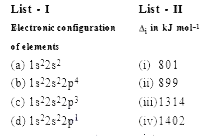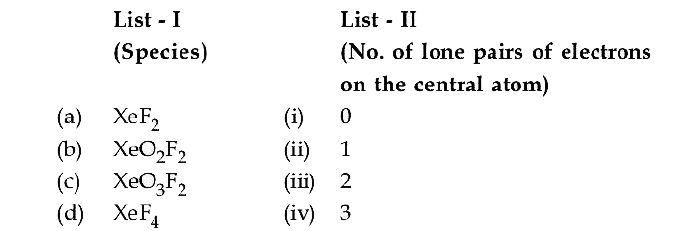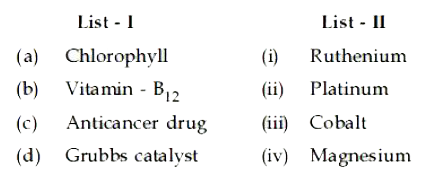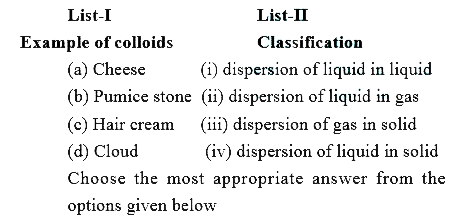Given below are two statements :
Statement I : H2O2 is used in the synthesis of Cephalosporin
Statement II : H2O2 is used for the restoration of aerobic conditions to sewage wastes.
In the light of the above statements,choose the most appropriate answer from the options given below :
Statement I is correct but Statement II is incorrect
Both Statement I and Statement II are correct
Statement I is incorrect but Statement II is correct
Both Statement I and Statement II are incorrect
The correct Answer is:B
To solve the question regarding the two statements about hydrogen peroxide (H₂O₂), we will analyze each statement step by step.
Step 1: Analyze Statement I
Statement I: H₂O₂ is used in the synthesis of Cephalosporin.
- Explanation: Hydrogen peroxide is indeed used in the synthesis of various pharmaceuticals, including Cephalosporin. Cephalosporins are a class of antibiotics that are derived from the fungus Acremonium and can be synthesized using H₂O₂ in certain reactions. Therefore, this statement is correct.
Step 2: Analyze Statement II
Statement II: H₂O₂ is used for the restoration of aerobic conditions to sewage wastes.
- Explanation: Hydrogen peroxide is utilized in wastewater treatment processes. It acts as an oxidizing agent that can help restore aerobic conditions in sewage treatment by promoting the growth of aerobic bacteria. This helps in the breakdown of organic matter in sewage. Thus, this statement is also correct.
Conclusion
Both statements are correct. Therefore, the most appropriate answer is that both Statement I and Statement II are correct.
Final Answer
The correct option is: Both Statement I and Statement II are correct.
---
Statement I: H₂O₂ is used in the synthesis of Cephalosporin.
Statement II: H₂O₂ is used for the restoration of aerobic conditions to sewage wastes.
Both statements are correct. Therefore, the most appropriate answer is that both Statement I and Statement II are correct.
The correct option is: Both Statement I and Statement II are correct.
Topper's Solved these Questions
Similar Questions
Knowledge Check
- Question 1 - Select One
Match List - I with List- II

Choose the most appropriate answer from the options given below -A(a)→(ii),(b)→(iii),(c)→(iv),(d)→(i)B(a)→(i),(b)→(iv),(c)→(iii),(d)→(ii)C(a)→(i),(b)→(iii),(c)→(iv),(d)→(ii)D(a)→(iv),(b)→(i),(c)→(ii),(d)→(iii)
Match List - I with List -II

Choose the most appropriate answer from the options given below :View SolutionMatch List-I with List-II :

Choose the most appropriate answer from the options given below :View SolutionMatch List-I with List-II :

Choose the most appropriate answer from the options given below :View SolutionMatch List - I with List - II.

Choose the most appropriate answer from the options given below :View SolutionMatch List - I with List - II.

Choose the most appropriate answer from the options given below :View SolutionMatch List - I with List - II

Choose the most appropriate answer from the options given below :View SolutionMatch List - I with List - II.

Choose the most appropriate answer from the options given below :View Solution



